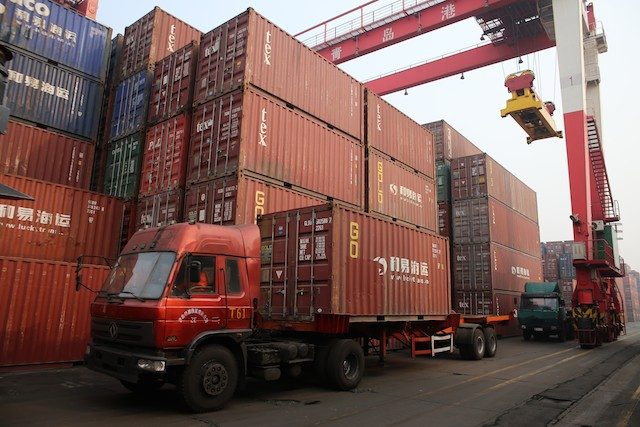SUMMARY
This is AI generated summarization, which may have errors. For context, always refer to the full article.

MANILA, Philippines – The Free Trade Agreement of the Asia Pacific (FTAAP) being pushed by China would help judge how 150 trade deals around the region “fit together” or come in “conflict with one another,” Asia-Pacific Economic Cooperation (APEC) Secretariat Executive Director Alan Bollard said on Monday, November 16.
Bollard made the statement in a news conference at the International Media Center in Manila, when asked whether the Trans-Pacific Partnership (TPP), which involves 12 of the 21 APEC economies, complements, overlaps with, or rivals the FTAAP.
Bollard explained the role of the FTAAP in the context of around 150 trade agreements in the Asia-Pacific region.
“We see the FTAAP study as the way to judge where all these (free trade agreements) are going, how much they fit together, could they conflict with one another, and what might come to help integrate that, moving together in the future. That’s the main aim of the study,” he said.
As for the TPP in particular, Bollard said that while the APEC is not formally involved in the initiative, it has observed its progress.
“We’d all be pleased to see the text [on the TPP] out in the public arena so we can judge that. I think it’s fair to say that APEC doesn’t want to see different trade agreements going off in different directions,” he said.
“We wouldn’t want to see TPP as a rich economy club going off like that, and we’ve got the Regional Comprehensive Economic Partnership [in which] the Philippines and other economies are involved in…going off in another direction,” Bollard added.
The FTAAP, first proposed in 2006 and pushed by China during its chairmanship in 2014, is seen as a potential rival to the TPP. If realized, the FTAAP would become the world’s largest free trade area, encompassing TPP and other regional frameworks.
China said it would report the findings of a study on FTAAP during the summit, to be attended by President Xi Jinping.
The TPP, involving 12 of the 21 APEC economies, is the biggest trade deal currently in place. However, the deal has yet to be ratified by the legislatures of its members.
China has latched onto the FTAAP as a hedge against the US-led TPP, a key element of Washington’s “Asia pivot.”
Although the United States has said it is open to Chinese participation in the TPP, it has excluded the world’s number two economy from negotiations.
Aside from the TPP, other major regional trade deals include the Regional Comprehensive Economic Partnership (RCEP), the Pacific Alliance, and the ASEAN Economic Community (AEC).
US President Barack Obama and 11 other world leaders will meet in Manila on Wednesday, November 18, to discuss the TPP.
The APEC, the highest-level, most influential economic forum in the region, is holding its high-level meetings and the economic leaders’ summit in Manila this week, a culmination of a year’s meetings.
APEC’s 21 members account for more than 50% of global gross domestic product and nearly half of world trade.
This year, the Philippines, as host country, made inclusive growth a focus, with an emphasis on small businesses. – With a report from Agence France-Presse / Rappler.com
Add a comment
How does this make you feel?
There are no comments yet. Add your comment to start the conversation.